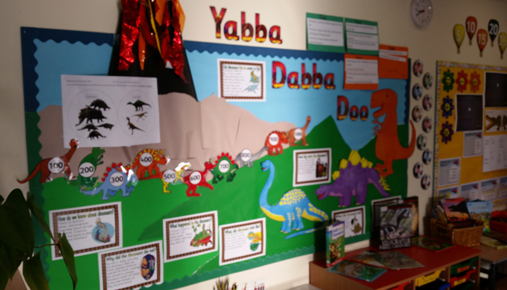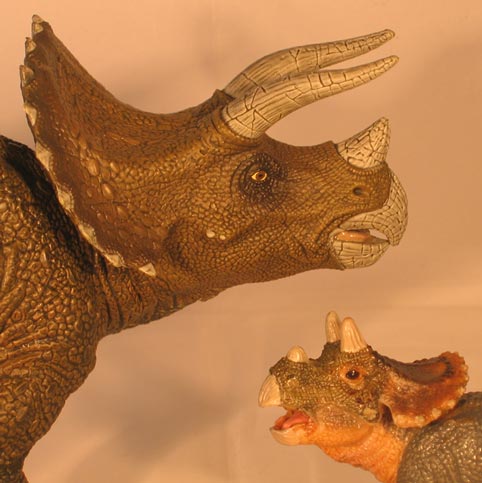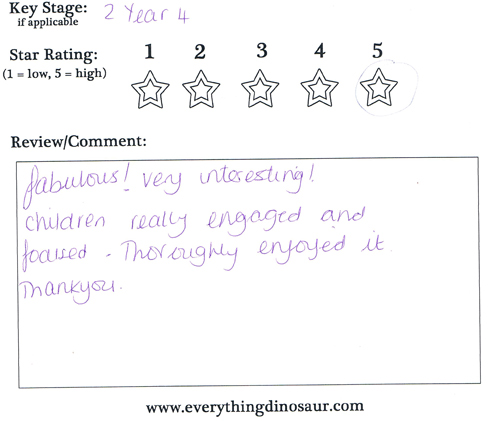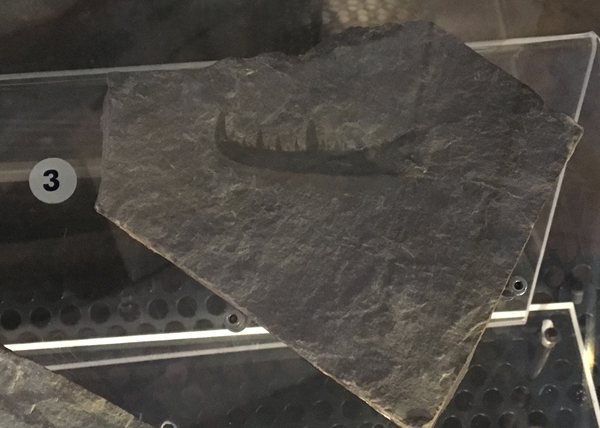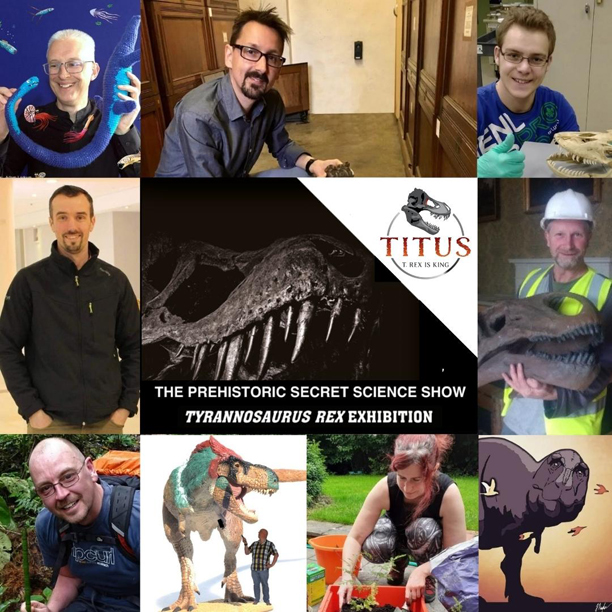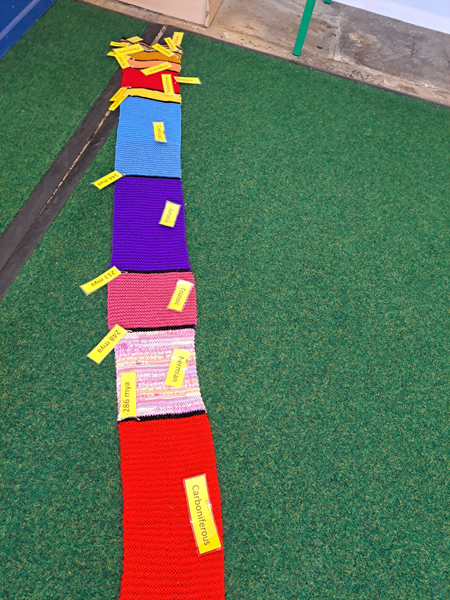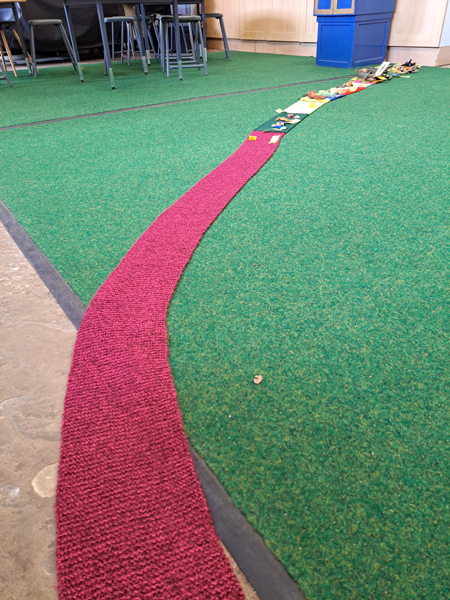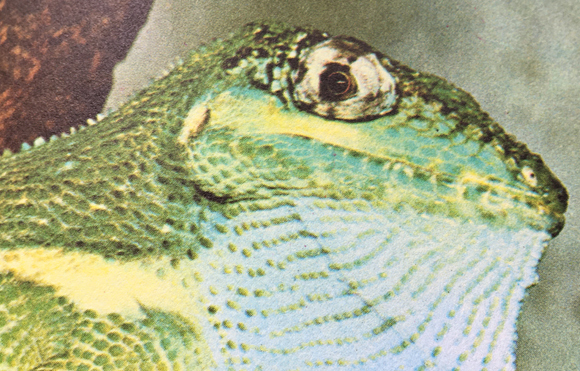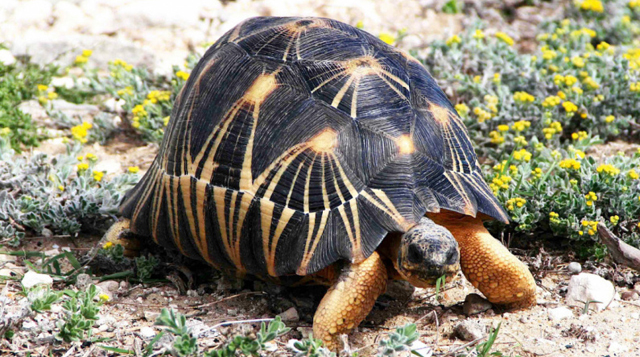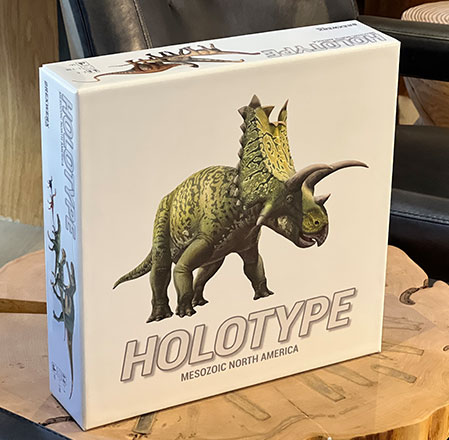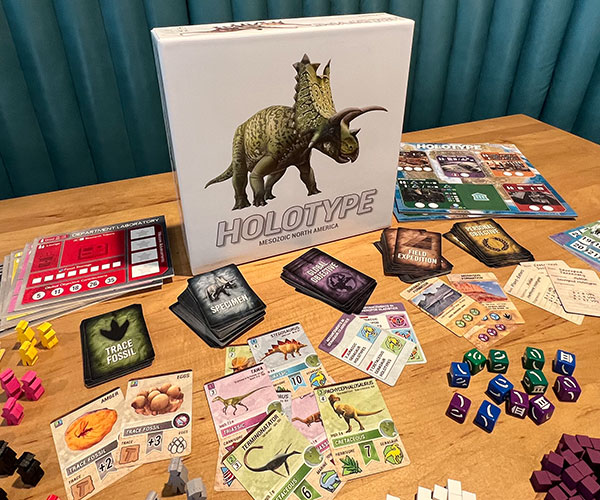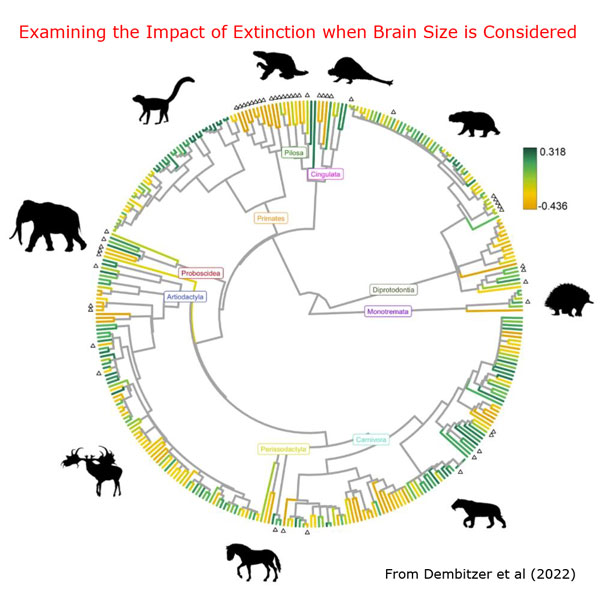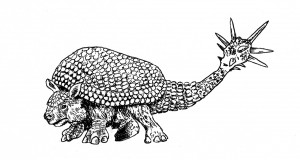In episode four (Ice Worlds) of the acclaimed television series “Prehistoric Planet”, a troodontid dinosaur is depicted deliberately spreading a forest fire. Is this behaviour plausible? This Apple TV+ series has been praised for depicting prehistoric animals not as movie monsters but as animals capable of complex behaviours as seen in living relatives. The behaviour of many of the dinosaurs in the documentary series reflects behaviour observed and documented in birds.

The feathered troodontid, regarding as one of the cleverest non-avian dinosaurs to have evolved, searches for a smouldering ember in order to start a fire elsewhere in the forest. Picture credit: Apple TV Plus.
Picture credit: Apple TV Plus
Lead scientific consultant for the five-part, nature documentary series, vertebrate palaeontologist and author Darren Naish has used his extensive knowledge of the living world to create realistic scenarios illustrating behaviours of long extinct creatures.
For example, the troodontid is depicted carefully selecting a burning ember and carrying it to another, as yet unburnt, part of the forest in order to deliberately start a fire. Fire starting is a behaviour that has been observed in some species of birds.
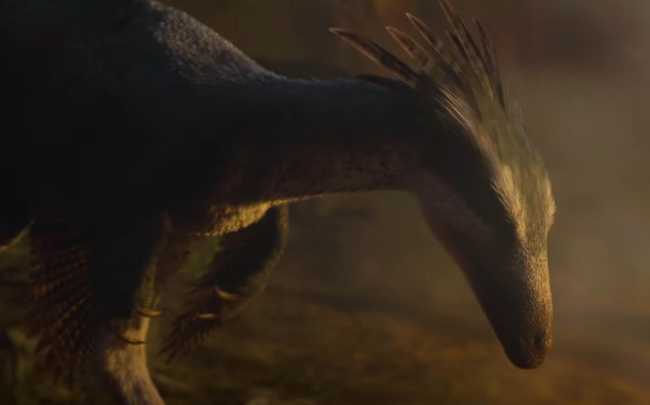
A troodontid patrols the edge of a forest fire in a northern, Late Cretaceous forest. Small animals fleeing the flames would make an easy target for this hunter, but did it deliberately carry smouldering embers to create further fires as part of its hunting strategy? Picture credit: Apple TV Plus.
Picture credit: Apple TV Plus
Forest Fires Provide an Opportunity for Hunters
Flames and smoke from a forest fire, presumably started by lightning would cause animals to flee and a hunter like a troodontid could patrol the fringes of the fire and ambush any small mammal, lizards or birds that had been panicked and were attempting to avoid the flames.
In the scene which features the troodontid, this clever little dinosaur (troodontids having relatively large brains in proportion to their body size), chooses an ember and deliberately carries it to another part of the forest to in order to spread the fire.

In the television episode the troodontid is shown carrying an ember from the forest fire. It drops the ember in a part of the forest not yet ablaze in a bid to flush out more potential prey. Picture credit: Apple TV Plus.
Picture credit: Apple TV Plus
Australian Fire Hawks
Indigenous Australians have reported that certain types of bird intentionally spread fires in order to exploit feeding opportunities. People in northern Australia have considered the black kite (Milvus migrans), the whistling kite (Haliastur sphenurus) and the brown falcon (Falco berigora) to be “fire hawks” picking up smouldering debris moving it some distance and then dropping it in a bid to spread the conflagration. Some of the observations and anecdotes were reported in a scientific paper published in the “Journal of Ethnobiology”.
The paper attempted to document evidence supporting the theory that many birds of prey used fires to help them find food, making easy meals out of insects and other small animals attempting to avoid the blaze.
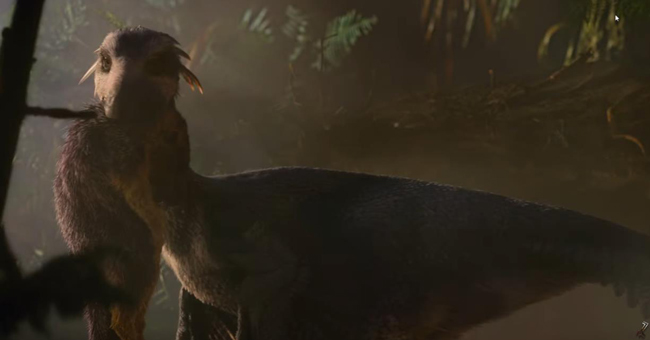
A successful hunt. The intelligent and resourceful troodontid claims its prize. Picture credit: Apple TV Plus.
Picture credit: Apple TV Plus
Co-author of the scientific paper, which was published in 2017, Mark Bonta (Pennsylvania State University), commented:
“We’re not discovering anything. Most of the data that we’ve worked with is collaborative with Aboriginal peoples. They’ve known this for probably 40,000 years or more.”
Other Scientists are Sceptical
Some experts have expressed scepticism, whether these birds were intentionally spreading fires or were seen to pick up sticks as a consequence of darting down to capture prey but missing their intended target.
Anthony Molyneux of the Alice Springs Desert Park commented:
“If [hawks] have missed the prey and perhaps grabbed a stick, they will drop that stick or rock. If the stick is smouldering or on fire, then it will start another fire.”
In a 2016 interview with the Australian Broadcasting Corporation, Bob Gosford, an Australian indigenous-rights lawyer and ornithologist explained that these raptors thrive in areas where wildfires are common.
In the interview he stated:
“It’s a feeding frenzy, because out of these grasslands come small birds, lizards, insects, everything fleeing the front of the fire.”
There have been many first-hand accounts of hawks and other birds of prey picking up burning sticks in their claws and dropping them in a fresh area of dry grass several hundred metres away to start another fire.
No one can ever know whether troodontids or other theropod dinosaurs indulged in this fire-spreading behaviour, but research is on-going to determine whether their close relatives (birds) deliberately spread fires.
It certainly made an intriguing and thought-provoking segment in the documentary series.
The scientific paper: “Intentional Fire-Spreading by “Firehawk” Raptors in Northern Australia” by Mark Bonta, Robert Gosford, Dick Eussen, Nathan Ferguson, Erana Loveless, Maxwell Witwer published in the Journal of Ethnobiology.
To view articulated models and replicas of dromaeosaurids including troodontid dinosaurs: Beasts of the Mesozoic Articulated Models.
